How to clean the hood in the kitchen of fat: the most effective means and methods
During operation, the surface of the hood gradually dims, the intake grille is covered with sticky coating, and the performance of the device decreases. For a presentable type of household equipment will have to fight.
To begin with, you should choose the most suitable method and decide how to clean the hood in the kitchen from grease, taking into account the degree of contamination, the effectiveness of different methods and the safety of detergents. Let's understand the whole variety of means and methods of cleaning the hood.
The content of the article:
The need and frequency of cleaning the hood
Modern housewives try to make life as comfortable as possible, using all kinds of devices and innovations to facilitate everyday activities. One of the indispensable attributes and an assistant in the kitchen was the hood.
However, with improper care, the effectiveness of the device decreases - exhaust filters become clogged and do not fulfill their functions. The throughput capacity of a contaminated grate decreases, and the device itself copes worse with the removal of odors, moisture and can fail.

The frequency of cleaning the hood from fat accumulation depends on the intensity of use of the device.
Recommended Dates:
- professional catering - weekly;
- daily cooking at home - once a month-quarter, depending on the amount of vapors removed.
The cleaning technology is determined by the type of filter installed and the degree of contamination.
Care should be taken of the cooker hood constantly, cleaning without dismantling and dismantling the filter:
In hoods devices are used:
- Carbon filters. Perform thin cleaning of the air circulating indoors - the cartridge absorbs odors and grease. The carbon filter can not be cleaned, it must be changed once a quarter to a year, when the traction force of the hood decreases.
- Metal mesh. Grease traps are responsible for rough cleaning. The basis of the mesh is aluminum or stainless steel, complemented by synthetic components (synthetic winterizer, non-woven).
Do not tighten the hood with general cleaning. Cleaning old fat is a laborious and complex process.
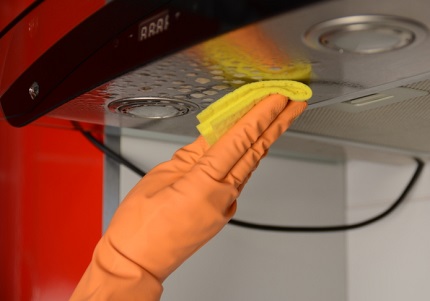
How to prepare the equipment for washing?
Before washing the hood from the accumulated fat, disconnect and disassemble the air-cleaning device. First you need to study the technical documentation and find out the list of collapsible sections. For removable parts, it is necessary to prepare boxes, the working area of the stove should be freed from kitchen utensils.
The standard dismantling and dismounting algorithm:
- Unlock latches, remove cover from grooves or unscrew fixing bolts.
- Remove the grease filter. In recirculation models, remove the carbon cartridge - it is located behind the metal grill.
- To dismantle the pipe going from the exhaust “hood” to the outlet.
- Remove the internal air filter, if provided in the design.
After disassembling the hood, it is necessary to evaluate the extent of contamination and choose the optimal cleaning method. To remove old growths of fat will have to resort to aggressive methods.
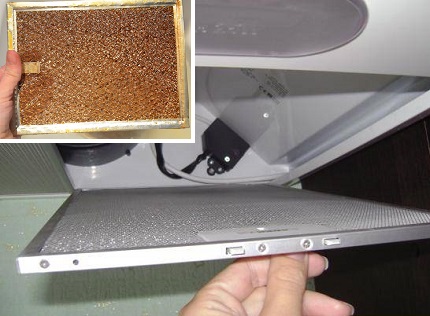
Removing dirt from the hood folk methods
Observing the terms of service of the air cleaner, scheduled cleaning will not require much time and effort. For work, you can use improvised means: ammonia, vinegar, lemon, etc.
The traditional method of removing fat from a kitchen hood filter involves a number of standard steps, these are:
Getting rid of hard fat deposits and soot is a more difficult task. Contaminated elements are subjected to heat and mechanical treatment.
Methods for cleaning minor contaminants
The most affordable, popular and quite effective means for the care of air intake grilles are:
- acetic acid;
- laundry soap;
- lemon acid;
- ammonia;
- mustard.
Before starting work, you should prepare a brush with a hard polymer pile, a rough sponge and a soft cloth. All manipulations are preferably carried out with rubber gloves. Consider each technology in detail.
Method number 1 - vinegar
To achieve a quick result, undiluted food acetic acid (70%) is used. Regular table vinegar (9%) will not cope with body fat.

Progress:
- Moisten the sponge in acid, wipe it with a grid on both sides. All contaminated surfaces must be treated with vinegar. Alternatively, you can place the strainer in a baking sheet with low sides and fill it with acid.
- Leave the hood details for 8-15 minutes - the time is selected taking into account the level of pollution.
- To clear the softened raid with a rough brush or a dense felt.
- Rinse the grate with running water and dry.
Removal of “fresh” fat stains is performed with an acid solution 50% diluted with water.
Method number 2 - laundry soap
To get rid of dirt and soot with the help of a soap solution, a metal or plastic scraper is used. The plus of the method is absolute safety.
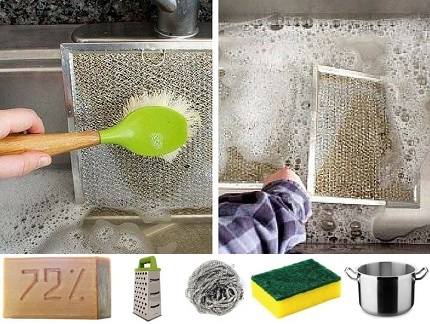
Sequencing:
- Grate the soap - you should get 2-3 handfuls of “soap shavings”.
- Heat the water to 60 ° C and dissolve the soap in it.
- Place the air intake grill in a soap emulsion for 30-60 minutes.
- After a period of time, if the fat began to easily “move away” from the net, clean the surface with a scraper.
- Rinse the filter thoroughly and dry.
Method number 3 - citric acid
Use a cool solution of "lemons" or slices of the lemon itself.

In the absence of fresh lemon, you can prepare an acidic emulsion yourself: dissolve the powdered food “lemon” in one liter of water (3 tbsp).
With the resulting composition, fill the filter mesh, and after 10 minutes, clean with a rough brush. To remove old deposits, 2-3 cleaning procedures are required.
Method number 4 - ammonia
The product is effective against "fresh" and long-standing greasy pollution. However, it requires careful use, since ammonia vapors are very caustic and dangerous.
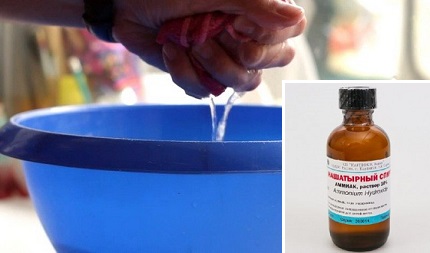
Technology for cleaning with ammonia:
- Heat water to 50 ° C.
- Add ammonia to the container at the rate of 0.5 cup / 3.5 liter of water.
- Lower dirty parts into the cleaning solution. The interaction time is 4 hours.
The fat layer will gradually begin to soften and dissolve. All that remains is to “walk” along the grate with a sponge and rinse the filter with clean water.
Method number 5 - mustard powder
Some housewives use the kitchen assistant according to the "grandmother" method today.
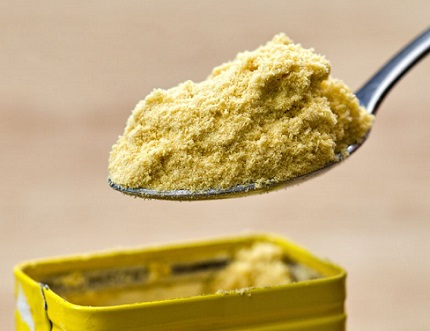
Application Technique:
- Rinse the grate with hot water in the shower.
- Prepare a cleaning mixture by mixing 3.5 tablespoons of mustard with 2 teaspoons of regular shampoo. Dilute the composition with hot water and vinegar (50/50) until a liquid slurry forms.
- Mix the mesh from the hood with a mixture.
- Soak a towel in hot water and wrap it with a wire rack. Leave for half an hour.
After a while, clean the net with a brush and rinse.
Digestion - the fight against old fat
Boiling the air intake grill is a labor-intensive process, but it is especially effective against hardened fat layer.
For home implementation you will need:
- metal bucket or pan - the volume of the container is selected in accordance with the dimensions of the strainer;
- grater, brush and sponge;
- baking soda - 1 cup;
- a bar of brown laundry soap;
- salt - 1 tablespoon;
- water.
There are no strict proportions for the preparation of the cleaning composition. However, for effective digestion, it is better to make a concentrated solution.

A step-by-step technology of how to clean the exhaust air intake grill from fat by boiling involves the following steps:
- Step 1. Fill the container with water and put on fire.
- Step 2. While the water is boiling, grate ½ bar of soap.
- Step 3. Gradually, adding one spoonful, pour out soda (1 glass / 5 l). It is necessary to act carefully, since the heated liquid in combination with soda can become turbulent. Mix the composition well without removing from heat.
- Step 4. After dissolving the soda, add soap and salt.
- Step 5. Lower the dirty nets into the boiling liquid and leave to simmer over low heat.
After heat treatment, most of the contaminants are separated. It remains to lightly clean the surface with a brush, wipe with a sponge.

If the soda "boiling out" did not help, you can resort to boiling with ammonia. The composition of the solution is 100 ml of ammonia / 5 l of water. Mix the liquids, bring to a boil, immerse the lattices in a container and hold for 1 hour at minimum heat.
At the end, remove the remaining dirt with a brush, rinse the air intake with water and dry it.
The use of chemicals
Using purchased detergents greatly facilitates the task and speeds up cleaning. However, some drugs should be used with extreme caution - active reagents can harm human health and ruin the equipment.
Household Detergent Review
Store-based detergents for cleaning dishes and stoves do a good job of extracting fat.
Among the variety of household chemicals, the following drugs have proven themselves well:
- Spray "1 minute", Sanita (Russia);
- Anti-Fat Spray, Cinderella (Russia);
- Gel "Synergetic" (Germany);
- Spray and gel "Anti Fat + Shine", Cilit Bang (Poland);
- Gel and spray “Shumanit”, Bagi (Israel).
Sanita Spray
A quick-acting agent with active components in a few minutes “corrodes” fatty deposits, plaque and other types of dirt.Express spray is considered one of the leaders due to its versatility and affordable cost.
Sanita Spray is not designed to clean varnished, enameled, aluminum and painted surfaces.
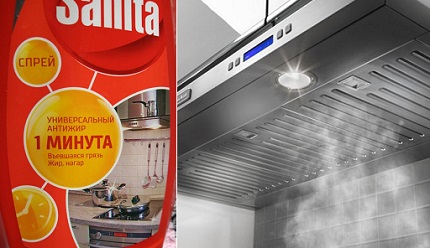
Cinderella Anti-Fat
Affordable, effective tool that gently cleans hard to remove impurities. It is acceptable to use on different types of surfaces after test use in a small area.
Before use, the spray valve must be turned to the “open” position and the surface irrigated. After 20-25 minutes, remove dirt with a brush.
Price for 500 ml - 2-2.4 cu Among the shortcomings, users note a very liquid consistency and fast flow rate.
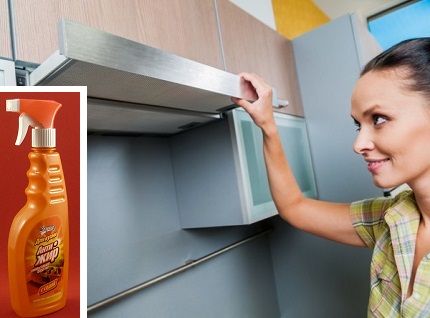
Synergetic for cookers
The gel-like product is positioned as a safe, natural preparation for cleaning stoves, ovens, pans and baking sheets. There are no aggressive chemicals in the composition, the product is 100% biodegradable.
Limitations of use: surfaces made of brass, copper and copper alloys, as well as aluminum. Despite safety, gloves should be used during work - they will protect hands from overdrying. The average cost is 10 cu / 1 liter.

Household chemicals Cilit Bang
Gels and Spray Anti Fat + Radiance is a Polish product for removing burnt and greasy dirt in the kitchen. Grease removers are made on the basis of surfactants, due to which they are distinguished by a “soft” effect on dirt. There are no abrasives in the composition.
The drug is convenient to use, well distributed on the surface and optimal with timely care. The cost of Anti-Fat + Radiance is 6 cu / 750 ml.

"Shumanit" from Bagi
Professional chemistry for easy removal of grease from surfaces involved in cooking. “Shumanit” is a powerful tool, therefore, it requires strict safety measures during use.
Distinctive features:
- lack of abrasive additives;
- antibacterial effect;
- quick action - the first effect is noticeable 5 minutes after applying the drug;
- effective cleansing of old fatty deposits;
- economical consumption.
The product is not suitable for cleaning aluminum or painted coatings. Cost - 4.5 cu / 500 ml.

The technology of using store-based fat solvents
Most of the proposed products have a similar tactic for cleaning the hood from fat, a possible difference is the time of "soaking" in a chemical preparation.
Standard action plan:
- Place the intake grill on the oven pan or place in bulk containers.
- Thoroughly treat the parts with the selected product.
- Leave the grease solvent - the permissible exposure time is written on the packaging or in the instructions for the product.
- In case of strong accumulations of dirt, the filters should be washed with warm water - this procedure will wash off the separated fatty layers.
To remove any residual deposits, it is necessary to reprocess the grill with a cleaning agent.

Heavy artillery: the risks of the radical method
When all the gentle methods have been tried and have no effect, some resort to "aggressive" processing. The arsenal for cleaning drain pipes of the type: "Mole», «Tiret», «Sterile», «Trumpet" etc.
Before deciding to take a radical step, it is worth assessing the possible risks and taking into account all the nuances of the work:
- non-compliance with the instructions for the preparation of the solution and the exposure time of the reagent is fraught with deformation of metal parts;
- the maximum allowable number of radical cleanings - 1-2 times for the entire period of operation;
- it is advisable to apply the method in the most “neglected” situations, when a hard coating has clogged all the cells of the air intake grille.
They start work after studying the instructions and observing safety standards.
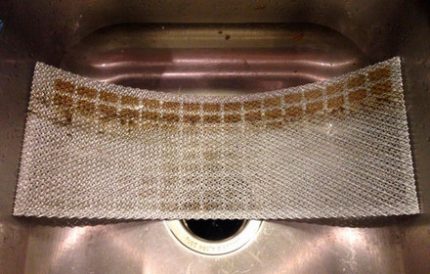
Possible progress:
- Liquid product. Put the processed parts in a container and fill with a solution prepared according to the manufacturer's instructions - the reaction will go instantly. After a couple of minutes, remove the grate, rinse several times with water.
- Granular component. Put contaminated items on a pallet, sprinkle with cleaning powder, pour hot water. After splitting the fat, the air distributor should be washed well.
Carefully pour the used caustic solution into the toilet.
Machine cleaning: steam generator and dishwasher
The easiest and safest method is parking. The method is effective, but its implementation requires the use of a steam generator or steam cleaner. Thanks to the device, it will be possible to remove fatty deposits without chemicals.

The only drawback of the method is the high cost of the steam generator.
Owners dishwasher can entrust the "dirty work" to an automated kitchen assistant. The performer is required to remove the net, put it in the compartment for large dishes, add detergent and select a washing mode.
The machine method is an excellent prevention of the appearance of solid fat deposits. Cleaning frequency - twice a month.
Caring for the exterior
While the grill and the internal filter dry, there is time to pay attention to the outside of the exhaust hood. The difficulty in cleaning the case is that the edible fat mixes with the settling dust and turns into hard plaque.
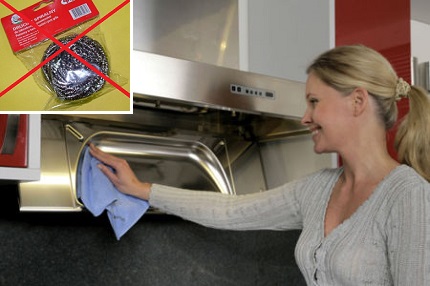
Cleaning Procedure:
- Apply detergent to the sponge and grate the surface.
- After half an hour, wipe the product with a soft damp cloth.
- Remove the remaining fat spots with a rubber scraper.
In order to prevent the formation of a hard crust on the case, it is necessary to minimize the idle work of the gas burner. Dry heat helps to fix fat deposits on the surface.
Conclusions and useful video on the topic
Restoring the throughput and appearance of the air intake grill using soda ash:
Cleaning the exhaust grill using a pipe cleaner
The variety of methods and cleaning agents allows you to choose the best option for the situation. In order not to resort to radical methods, scheduled maintenance should be carried out without waiting for the formation of hardened layers of fat.
Do you have your own experience in cleaning grease filters in kitchen hood filters? Perhaps you want to share your own methods of solving this problem or ask questions about the topic of the article? Please leave comments in the block below.

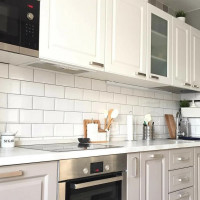 How to choose a hood over a gas stove: what criteria to consider when choosing a suitable model
How to choose a hood over a gas stove: what criteria to consider when choosing a suitable model 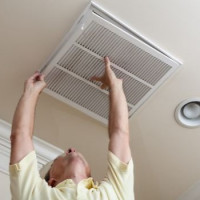 Repair of ventilation in the toilet and bathroom: how to identify and repair the hood in the bathroom yourself
Repair of ventilation in the toilet and bathroom: how to identify and repair the hood in the bathroom yourself 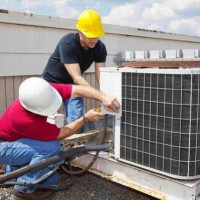 Cleaning ventilation ducts: effective methods and procedures for cleaning the ventilation duct
Cleaning ventilation ducts: effective methods and procedures for cleaning the ventilation duct 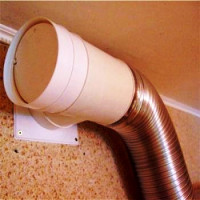 Check valve for ventilation: how to arrange ventilation with a check valve on the hood
Check valve for ventilation: how to arrange ventilation with a check valve on the hood  Installing a ventilation fungus on the roof: types and methods of installing a deflector on an exhaust pipe
Installing a ventilation fungus on the roof: types and methods of installing a deflector on an exhaust pipe 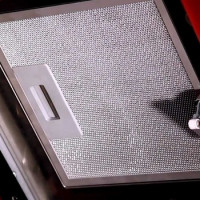 Fat filters for hoods: varieties, their features and disadvantages + how to choose
Fat filters for hoods: varieties, their features and disadvantages + how to choose  How much does it cost to connect gas to a private house: the price of organizing gas supply
How much does it cost to connect gas to a private house: the price of organizing gas supply  The best washing machines with dryer: model rating and customer tips
The best washing machines with dryer: model rating and customer tips  What is the color temperature of light and the nuances of choosing the temperature of the lamps to suit your needs
What is the color temperature of light and the nuances of choosing the temperature of the lamps to suit your needs  Replacement of a geyser in an apartment: replacement paperwork + basic norms and requirements
Replacement of a geyser in an apartment: replacement paperwork + basic norms and requirements
For several years of using the hood, the filter was regularly cleaned - it was boiled in a solution of soda and salt. The effect was good, but they began to notice that the throughput decreased. They removed the whole system, and that was just there. Washed with different solutions, including chemical ones, and only after that everything worked as before. General cleaning is needed at least once a year.
The combination of two methods turned out to be the most effective for me: first, treatment (soaking) with citric acid. Leave for the night, then a dishwasher. I do it once a month. If the fat turns out to be invincible, I use the old plumbers tool - caustic soda, but use it in a well-ventilated area with all safety measures in mind - gloves, a mask, glasses. And first make sure that the material of the grate is resistant to it.
And if you take from the store, then what is the most effective tool? At various forums and in your material, Schumanit is praised, but I have never met him in a store.
Good afternoon, Lika. If washed often, then the use of citric acid will be effective.
Helps to easily wash any product designed to remove fat. Many successfully wash with ordinary dishwashing detergents. Pre-soaking in warm water.
Shumanit is available in most specialized online stores. Ordering it is not as much difficulty as it might seem at first glance. Most importantly, do not use abrasive detergents, otherwise spoil the surface.
Over 10 years of use, soap 2 times (the extractor hood was not used so often), and both times it “makes noise”. There is a result, but the surface is visually damaged.
The article suggests using chemistry, but there is a warning: it is not recommended for aluminum, brass and metal surfaces. Well, why offer then?
“Chemistry” also happens different, before buying a particular cleaning or detergent you need to look at the recommendations! Abrasive detergents can ruin the surface - this is a fact, so they must be discarded first.
But I strongly disagree with the recommendation for cleaning the exhaust filter with a pipe cleaner. From personal experience, I can advise a simple, not much long, but still effective and safe way. Nothing new, though: warm water, washing up for dishes and an hour for soaking in a basin, go to another container. After this, grease deposits from the filters can be easily removed with an ordinary washcloth.
For cleaning the hood itself, it is better to use liquid products, no powders or granules that can scratch the surface. As a proven tool, I can recommend Cilit Bang.